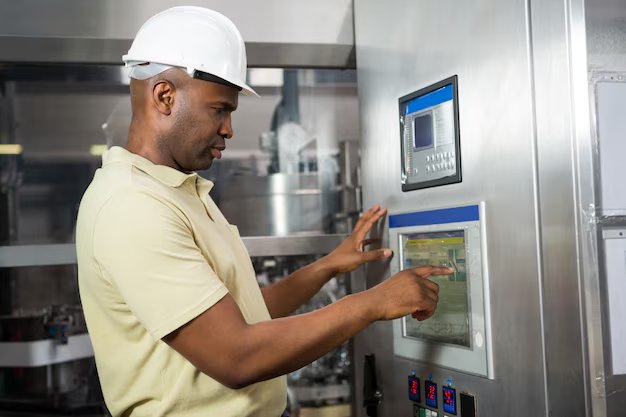Resetting Your GE Refrigerator Water Dispenser: A Comprehensive Guide
A GE refrigerator is an appliance that many homeowners rely on daily. It provides not only a place to keep your food fresh but also the convenience of having chilled water and ice at your fingertips. However, nothing is more frustrating than when your water dispenser suddenly stops working as expected. Whether it's dispensing slowly, not at all, or not producing cold water, there's likely an easy fix. This guide will help you learn how to reset your GE refrigerator's water dispenser and address common issues, ensuring you get back to enjoying uninterrupted access to fresh, chilled water.
Understanding Your GE Refrigerator Water Dispenser
The water dispenser in a GE refrigerator is part of a complex system that includes a water filter, a water line, and several control components. Before diving into the steps for resetting your dispenser, it's helpful to understand how these components work together. This foundational knowledge can make the troubleshooting and resetting process less daunting.
Key Components of the Water Dispenser System
- Water Filter: This component ensures you get clean and tasteless water by filtering out impurities and contaminants.
- Water Line: This is the supply line that brings water from your home's plumbing system to the refrigerator.
- Dispenser Control: This part of the refrigerator controls how much water is dispensed and can be adjusted based on user preference.
- Solenoid Valve: A device that opens and closes to release water when the dispenser lever is pressed.
Common Issues with Water Dispensers
Understanding the problem can make fixing your dispenser more straightforward. Some of the most common problems include:
- Water leakage
- Slow dispensing
- No water being dispensed
- Water that is not cool
Steps to Resetting Your GE Refrigerator Water Dispenser
Tackling issues with your GE refrigerator water dispenser usually starts with a simple reset. Here’s a step-by-step guide to help you through the process:
1. Power Cycle Your Refrigerator
The first and perhaps easiest solution is to conduct a power cycle of the refrigerator. This reset can often solve simple electronic glitches.
- Unplug the Refrigerator: Disconnect the appliance from the power outlet. Wait for about 30 seconds.
- Plug It Back In: Reconnect the power cable to the outlet.
- Test the Dispenser: Try the water dispenser to check if the issue is resolved.
2. Check the Water Filter
An outdated water filter can lead to flow issues. Ensure your water filter is up to date and correctly installed.
- Inspect the Filter: Look for visible signs of wear or damage.
- Replace if Necessary: If it's been more than six months since the last replacement, it might be time for a new filter.
3. Examine the Water Line
A kinked or blocked water line can prevent water from reaching the dispenser.
- Inspect the Line: Make sure the line is straight and free from visible blockage.
- Clear Obstructions: If the line is blocked, carefully remove the obstruction or straighten the line.
4. Reset the Display Panel
The control panel can sometimes become unresponsive due to electrical interference.
- Locate the Reset Button: This is often found on the display panel or behind the front cover.
- Press and Hold: Hold down the reset button until the panel resets, usually indicated by a beep or flash.
5. Inspect the Dispenser Switch
A faulty switch can lead to dispensing problems. Testing the switch might reveal the issue.
- Press and Hold the Lever: Listen for a clicking sound, which indicates the switch is working.
- Replace the Switch: If no sound is heard, consider replacing the switch.
👍 GE Refrigerator Reset Checklist
- Unplug and Replug: A quick power cycle may resolve simple issues.
- Check and Replace Filter: Regularly replace water filters to avoid clogs.
- Straighten Water Line: Ensure the line is free from kinks.
- Reset Display Panel: Use the reset button to refresh settings.
- Test Dispenser Switch: Listen for clicks to verify functionality.
Troubleshooting Persistent Problems
If resetting doesn't resolve the issue, it may be time to dive deeper into troubleshooting or call a professional. Here are some additional considerations:
Examine the Solenoid Valve
The valve can become faulty, impeding water flow to the dispenser:
- Test with a Multimeter: Ensure electricity is flowing through the valve. A reading outside the typical range indicates a fault.
- Hire a Technician: If you're not comfortable doing this yourself, seek help from a professional.
Addressing Temperature Issues
If the water isn't cooling correctly:
- Check Temperature Settings: Ensure the refrigerator is set to the correct temperature.
- Inspect the Door Seals: Worn-out seals can allow warm air inside, disturbing the cooling process.
Getting the Most from Your Water Dispenser
Ultimately, regular maintenance and checks will help prevent most issues with your GE refrigerator's water dispenser. Here are some best practices:
- Regular Filter Changes: Replace filters every six months for optimal performance.
- Inspect the Water Line: Make it a habit to check that the line is not kinked or blocked.
- Avoid Leaving the Door Open: Open doors can affect internal temperatures and cooling efficiency.
- Seek Professional Help When Needed: If issues persist, professional technicians can provide repairs beyond basic troubleshooting.
Insightful Closing
Maintaining and resetting your GE refrigerator water dispenser doesn't have to be a daunting task. With a bit of understanding and regular care, your water dispenser can provide years of service, ensuring you always have fresh, cool water at your fingertips. When troubleshooting, remember the small checks and resets that can make a world of difference, ensuring a continuous and efficient performance of your appliance. Keep an eye on regular maintenance needs, and don't hesitate to consult professional services if problems persist beyond your comfort level of handling them.
🔧 By giving attention to these details, you ensure not only the longevity of your refrigerator but also the satisfaction of having a reliable supply of fresh, chilled water.
